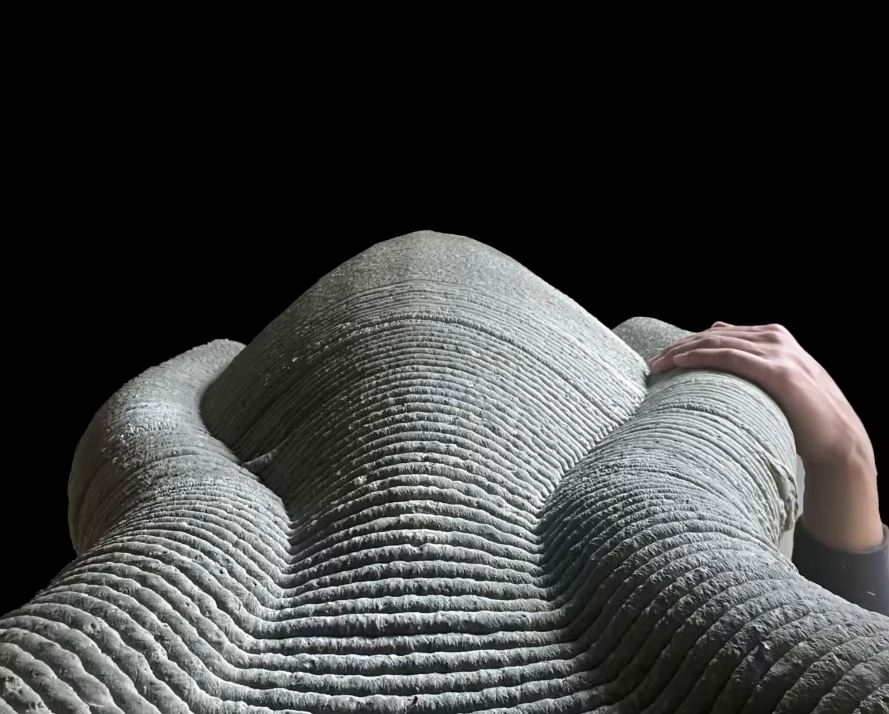
Shell Wall. Showing the nonplanar layer deposition and the elegant transition from Membrane to Structured Ribs with Rebar Reinforcement. (DART laboratory)
Researchers at the University of Michigan have developed a method to 3D print waste-free, ultra-lightweight concrete, which could bring down costs and make way for more ecofriendly structures in the construction industry.
Researchers Alireza Bayramvand and Yuxin Lin of U-M’s Taubman College of Architecture and Urban Planning’s DART lab and architect Mania Aghaei Meibodi found a way to create the new material. Their method, in comparison to conventional, solid concrete, is 72% lighter for the same size of material.
According to a U-M release, their discovery it leading to new patents beyond the university and new partnerships.
Until now, the most widely used approach to 3D concrete printing, or 3DCP, had geometric limitations that prevent the material from being printed in complex shapes.
“This leads to high concrete consumption and limits its application for lightweight forms that entail intricate shapes like branching and angular tubular forms, overhangs, layer cantilevers, and filament section or angle variations,” assistant professor of architecture at Taubman College Aghaei Meibodi said in a statement.
The University of Michigan team developed a “Shell Wall” approach, which combines topology optimization, computational design and robotic 3D printing technology.
This method “eliminates unnecessary overbuilding with excessive amounts of materials,” Aghaei Meibodi said in a statement. “All of these factors combined mean that we can build better, more environmentally friendly structures at a lower cost.”
The construction industry has seen a rise in 3D printing due to its ability to produce structures quickly, complex shapes all while minimizing waste.
Subscribe to AM Chronicle Newsletter to stay connected: https://bit.ly/3fBZ1mP
Follow us on LinkedIn: https://bit.ly/3IjhrFq
Visit for more interesting content on additive manufacturing: https://amchronicle.com
Lodestar3D, a prominent distributor of industrial 3D printing solutions in India, has announced the successful…
The International Advanced Research Centre for Powder Metallurgy and New Materials (ARCI) has signed a…
Since his postdoctoral days at MIT, Hang Yu, associate professor of materials science and engineering,…
Amritsar-based Amandeep Hospitals, in collaboration with Ujala Cygnus, has inaugurated North India’s first hospital-based 3D Printing and Virtual…
Engineers at The University of Texas at Austin are leading an academic and industry all-star…
For decades, aluminum has been the "golden child" of the automotive and aerospace sectors—lightweight, abundant,…
This website uses cookies.